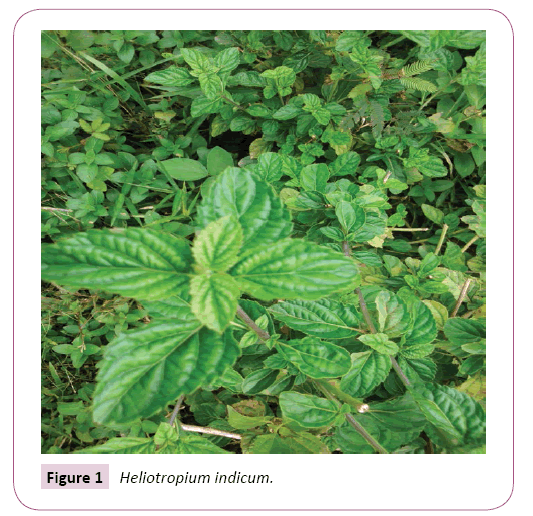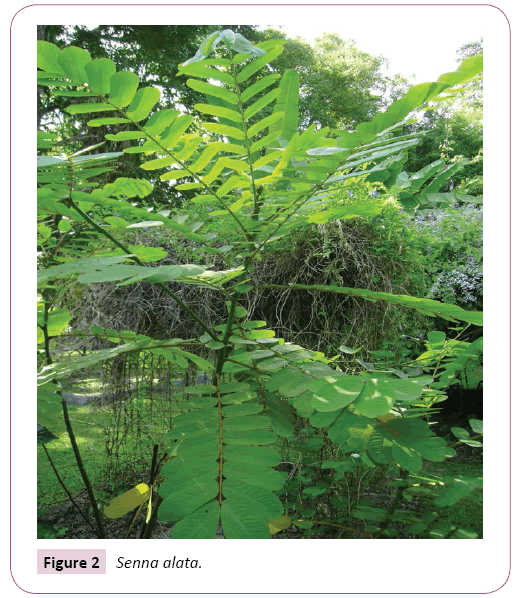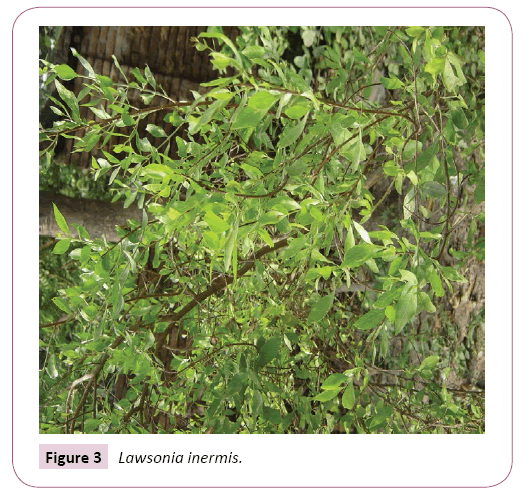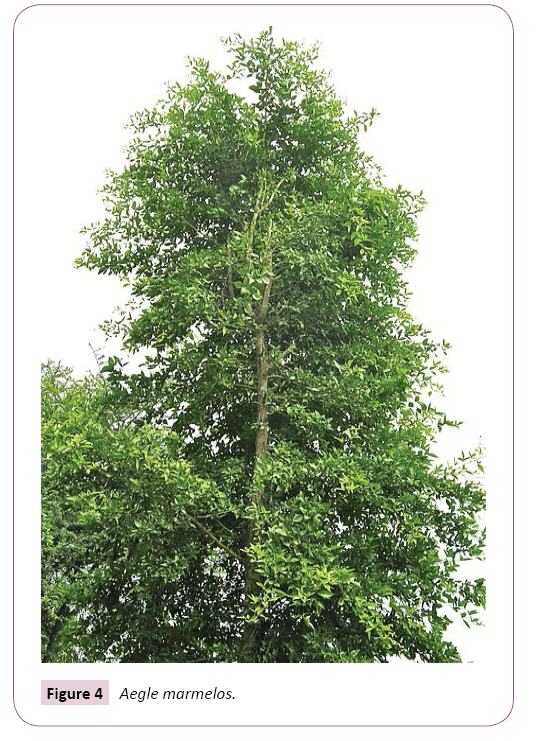ISSN : 2348-9502
American Journal of Ethnomedicine
Folk Medicinal Use of Plants to Treat Skin Disorders in Chandpur District, Bangladesh
Nuzum Mahbub1, Saimun Husain Mazumder2, Mohammed Zakaria Morshed2, Wahid Mozammel Haq2, Rownak Jahan2, Mohammed Shahadat Hossan3 and Mohammed Rahmatullah4*
1Department of Pharmaceutical Science, North South University, Dhaka-1229, Bangladesh
2Department of Biotechnology and Genetic Engineering,University of Development Alternative, Lalmatia, Dhaka-1207, Bangladesh
3School of Pharmacy, University of Nottingham, UK
4Department of Pharmacy,University of Development Alternative, Lalmatia, Dhaka-1207, Bangladesh
- *Corresponding Author:
- Mohammed Rahmatullah
Faculty of Life Sciences
University of Development Alternative
Bangladesh
Tel: +88-01715032621
Fax: +88-02-8157339
E-mail: rahamatm@hotmail.com
Received Date: December 10, 2017; Accepted Date: December 23, 2017; Published Date: December 30, 2017
Citation: Mahbub N, Mazumder SH, Morshed MZ, Haq WM, Jahan R, et al. (2017) Folk Medicinal Use of Plants to Treat Skin Disorders in Chandpur District, Bangladesh. Am J Ethnomed Vol.4 No.2:19
Abstract
Title: Folk medicinal use of plants to treat skin disorders in Chandpur district, Bangladesh.
Background: Folk medicinal practitioners (FMPs) possibly form the largest group of traditional medicinal practitioners in Bangladesh. FMPs essentially use plants for treatment of diseases; however, the selection of plants can differ widely among FMPs even within the same region. The objective of the present study was to document the phytotherapeutic practices of several FMPs in Chandpur district, who treated various types of skin disorders.
Methods and findings: Interviews of the FMPs regarding their phytotherapeutic practices were carried out with the help of a semi-structured questionnaire and the guided field-walk method between 2016-2017. The FMPs used a total of 10 plants distributed into 10 families in their 9 formulations.
Conclusions: Skin diseases are common in Bangladesh, particularly among the rural and urban slum people. These people most often cannot afford a visit to allopathic doctors. As such, the medicinal plants of the FMPs can prove useful in the treatment of skin disorders.
Keywords
Phytotherapy; Folk medicine; Chandpur; Bangladesh; Skin disorders
Introduction
The World Health Organization (WHO) has found a high prevalence of skin diseases in the general population of developing countries, some diseases being more prevalent in children. The major skin disorders found in children, as reported by the World Health Organization, include pyoderma, tinea capitis, scabies, viral skin disorders, pediculosis capitis, dermatitis, and reactions due to insect bites [1]. Besides skin problems caused due to ingestion of arsenic-contaminated food and water, skin diseases are common in the rural and urban slum population of Bangladesh because of lack of proper toilet facilities and unhygienic conditions of living. A study of skin patients at Faridpur Medical College Hospital, Bangladesh revealed that the common skin infections are eczema, fungal infections, scabies, and pyodermas [2].
Eczema is a collective term for some medical conditions that can cause the skin to get irritated or inflamed, the most common form of eczema being known as atopic dermatitis. The disorder has no total cure in allopathic medicine; however symptoms can be alleviated with various types of drugs including corticosteroids. Common superficial fungal infections of the skin in children include tinea capitis, tinea corporis, and pityriasis versicolor [3]. Scabies is caused by a parasite. Pyodermas are bacterial infections of the skin, which bacteria may include among others, various species of Staphylococcus.
From ancient periods, people in Bangladesh have been used to medicines, which are now referred to as alternative, complementary or traditional medicines. This has continued even at present after introduction of allopathic medicines. A number of factors are behind these. First, traditional medicines have proven their efficacy over hundreds and thousands of years. Second, a large number of people of the country do not have access to modern doctors or cannot afford doctor’s fees or the cost of allopathic medicines. Third, a number of allopathic medicines give adverse effects. All of the above factors have led to the use of traditional medicines even in present times.
Two other problems have arisen, which necessitates discovery of new drugs. The first is the emergence of new types of diseases like bird flu and other viral diseases. The second is the growing resistance of various disease-causative agents to available allopathic drugs. As such, new drugs are necessary, and one of the time-proven methods to discover new drugs is conducting ethnomedicinal surveys among traditional medicinal practitioners. Towards that, we had been conducting ethnomedicinal surveys among folk medicinal practitioners (FMPs) and tribal medicinal practitioners for quite some time [4-13]. The objective of the present study was to document the plants used by FMPs in Chandpur district, Bangladesh to treat skin disorders.
Materials and Methods
The survey was conducted in Chandpur district, Bangladesh (area 189.90 square kilometers, located in between 23°12' and 23°20' north latitudes and in between 90°45' and 90°55' east longitudes). Initially visits were made to randomly selected villages of the district and presence of any practicing FMP(s) in the village determined. A total of four FMPs from four different villages were selected based on their claim that they treated skin disorders. Claims of the FMPs were authenticated by the villagers prior to any further deliberations. Informed consent was obtained from each FMP to disseminate any information obtained.
Actual interviews and collection of plant specimens were conducted through the guided field-walk method of Martin [14] and Maundu [15]. In this method, the FMPs took the interviewers through daytime guided field-walks through areas from where they collected their plants or plant parts and the plant(s) were shown to the interviewers. Plant specimens were photographed and collected on the spot and brought back for identification by a trained botanist at the Medical Plant Collection Wing of the University of Development Alternative. Interviews of the FMPs were conducted in Bengali, which was spoken fluently by all.
Results and Discussion
Medicinal plants and diseases treated by the FMP
The FMPs were found to use a total of 10 plants distributed into 10 families in their formulations, which were 9 in number. These formulations were used to treat skin diseases like acne, eczema, scabies, ringworm, pimples, and dark spots. The results are shown in Table 1. Interestingly, one plant, Blumea lacera was used to treat skin tumors, tumors being defined by the FMP as unexplained swellings on the skin surface. The FMPs did not understand the causative agent(s) behind various skin infections like ringworm or other fungal or bacterial skin infections. Their treatments were based on visual inspection of the skin. As a result, most of the infections were simply termed “charma rogh”, charma being Bengali for skin, and rogh being Bengali for disease or disorder.
| Serial Number | Scientific Name (English name) | Family Name | Local Name | Parts used | Ailments and mode of medicinal use |
|---|---|---|---|---|---|
| 1 | Blumealacera (Burm.f.) DC.(Kakronda, Blumea) | Asteraceae | Shialmutra | Whole plant | Skin diseases, skin tumor, scabies, blood purification. For skin diseases (acne, eczema) and skin tumor, whole plant is boiled in water and the decoction filtered. Two table spoons of the decoction are taken thrice daily orally. For scabies and blood purification, one table spoon of the decoction is taken daily in the morning on an empty stomach. |
| 2 | Heliotropiumindicum L. (Indian heliotrope) | Boraginaceae | Hatisur | Leaf, stem | Skin diseases (any type). Paste of leaves or juice obtained from crushed leaves and stems is topically applied. |
| 3 | CuscutareflexaRoxb. (Giant dodder) | Convolvulaceae | Swarnalota | Vine | Skin infections. Juice obtained crushed fresh vine is taken orally. |
| 4 | Sennaalata (L.) Roxb. (Candle bush) | Fabaceae | Daudgach | Leaf | Ringworm infection. Paste prepared from crushed tender leaves is topically applied thrice daily to infected area(s) after washing the area with warm water. |
| 5 | Lawsoniainermis L. (Henna) | Lythraceae | Mehedi | Leaf | Scabies, skin infections, wound. Paste prepared from tender leaves is applied topically to affected area one hour before taking a bath. This is continued for 8-10 days. Alternately, leaves are dried and then soaked in water to prepare syrup. Four teaspoons of the syrup are taken orally thrice daily for 35-40 days. |
| 6 | Azadirachtaindica A. Juss. (Neem) | Meliaceae | Neem | Leaf | Scabies, fungal skin diseases. Paste of leaf is applied topically one hour before taking bath. |
| 7 | Tinosporacordifolia (Willd.) Miers. (Indian Tinospora) | Menispermaceae | Guloncho | Whole plant | Skin diseases (bacterial). Whole plant is cut into small pieces and boiled in water to make syrup. The syrup is taken orally thrice daily on an empty stomach. |
| 8 | Aeglemarmelos (L.) Corr. (Indian quince) | Rutaceae | Bael | Leaf | Acne, pimples, dark spots. Tender leaves of Aeglemarmelos and rhizomes of Curcuma longa are crushed together to make paste. The paste is applied topically for an hour before taking a bath. |
| 9 | Solanumhannemanii RG van den Berg and N Groendijk-Wilders | Solanaceae | Kantabaegun | Whole plant | Acne, scabies. Whole plants are dried to prepare powder, which is taken orally in the morning daily on an empty stomach. |
| 10 | Curcuma longa L. (Turmeric) | Zingiberaceae | Holud | Rhizome | See Aeglemarmelos. |
Table 1: Medicinal plants and formulations used by folk medicinal practitioners of Chandpur district, Bangladesh to treat skin disorders.
Blumea lacera leaf paste has applications among the Santal tribe living in Susunia Hill of Bankura District, West Bengal, India to stop bleeding from wounds [16]. Heliotropium indicum (Figure 1) is used in cases of dermatitis; leaf paste is used for the treatment of skin infections [17]. Traditional healers in Kancheepuram district of Tamil Nadu, India, use the plant to cure skin diseases; leaves are used to treat skin infection in Nicaragua [18]. Ethnomedicinal application of Cuscuta reflexa for treatment of skin diseases has been reviewed [19].
The skin disease(s) curing property of Senna alata (Figure 2) leaves has also been reviewed [20]. Antibacterial and antifungal activities of leaf extract have also been demonstrated [21]. Extract of Lawsonia inermis (Figure 3) leaf showed inhibitory activity against a skin pathogen, Streptococcus pyogens [22]. Various parts of Azadirachta indica including leaves are known for antidermatophytic activity (a number of diseases caused by bacteria and fungus) [23]. Tinospora cordifolia is a wellmentioned plant in Ayurveda texts for treatment of skin diseases [24]. The antifungal activity of Aegle marmelos (Figure 4) leaf extract against dermatophytic fungi has been demonstrated [25]. Solanum hannemanii seems to be a unique (previously unreported) plant used against skin diseases by the FMPs and so merits further scientific research. Curcuma longa has from ancient periods used for skin care including brightening of skin, improving skin texture, and against various skin diseases; the use of rhizomes of the plant to cure ringworm, eczema and other parasitic skin diseases has been reviewed [26].
Taken together, it is quite evident that FMPs of Bangladesh can possess considerable knowledge of the therapeutic properties of plants. Scientific evidences support the use by the FMPs and tribal medicinal practitioners, as observed and analyzed in a number of our studies before [27-30]. The medicinal plants of Bangladesh can play a vital role in the discovery of lead compounds and new drugs.
Conclusion
The medicinal plants used by the FMPs appear to have similar ethnomedicinal uses for treatment of skin disorders in other regions of the world. Plants like Senna alata and Azadirachta indica are also validated scientifically for skin disease(s) treatment. Thus these plants can be readily available and affordable sources for treatment of skin diseases.
Acknowledgements
The authors thank the FMPs for providing information.
References
- World Health Organization (2005) Epidemiology and Management of common skin diseases in children in developing countries. World Health Organization, Department of Child and Adolescent Health and Development.
- Sarkar SK, Islam AKMS, Sen KG, Ahmed ARS (2010) Pattern of skin diseases in patients attending OPD of Dermatology Department at Faridpur Medical College Hospital, Bangladesh, Faridpur Med Coll J 5: 14-16.
- Kelly BP (2012) Superficial fungal infections. Pediatr Rev 33: e22-e37.
- Rahmatullah M, Pk SR, Al-Imran M, Jahan R (2013) The Khasia tribe of Sylhet district, Bangladesh and their fast disappearing knowledge of medicinal plants. J Altern Complement Med 19: 599-606.
- Rahmatullah M, Khatun Z, Barua D, Alam MU, Jahan S, et al. (2013) Medicinal plants used by traditional practitioners of the Kole and Rai tribes of Bangladesh. J Altern Complement Med 19: 483-491.
- Mukti M, Rahmatullah M (2013) Treatment with aquatic plants by a Bagdi tribal healer. Ancient Sci Life 33: 22-26.
- Kabir MH, Hasan N, Rahman MM, Rahman MA, Khan JA, et al. (2014) A survey of medicinal plants used by the Deb barma clan of the Tripura tribe of Moulvibazar district, Bangladesh. J Ethnobiol Ethnomed 10: 19.
- Bhuiyan P, Khatun Z, Jahan S, Morshed MT, Rahman S, et al. (2013) Use of Quranic verses, amulets, numerology, and medicinal plants for treatment of diseases: a case study of a healer in Narsinghdi district, Bangladesh. Am.-Eur J Sustain Agric 7: 415-425.
- Sultana A, Rahmatullah M (2016) A critical analysis of some medicinal plants used by a folk medicinal practitioner in Savar, Dhaka district, Bangladesh. World World J Pharm Pharm Sci 5: 2157-2166.
- Akter MN, Tanny UT, Akter N, Ahmed KMI, Roknuzzaman M, et al. (2016) Folk medicinal practices of a village practitioner in Jessore district, Bangladesh. J Chem Pharmaceut Res 9: 209-213.
- Akter MH, Akter MH, Prodhan MT, Akter S, Akter N, et al. (2017) Documentation of plant-based remedies of a folk herbalist of Comilla district, Bangladesh. World J Pharm Pharm Sci 6: 1-11.
- Rahman T, Roy PR, Chhanda NN, Seraj S, Rahmatullah M (2017) Combination of Ayurveda and folk medicine: plants and formulations of a traditional medicinal practitioner in Noakhali district, Bangladesh. J Med Plants Stud 5: 292-297.
- Mannaf MA, Islam MA, Akter S, Akter R, Nasrin T, et al. (2013) A randomized survey of differences in medicinal plant selection as well as diseases treated among folk medicinal practitioners and between folk and tribal medicinal practitioners in Bangladesh. AmEur J Sustain Agric 7: 196-209.
- Martin GJ (1995) Ethnobotany: A ‘People and Plants’ Conservation Manual. London: Chapman and Hall.
- Maundu P (1995) Methodology for collecting and sharing indigenous knowledge: a case study. Indigenous Knowledge and Development Monitor 3: 3-5.
- Rahaman CH, Karmakar S (2015) Ethnomedicine of Santal tribe living around Susunia hill of Bankura district, West Bengal, India: The quantitative approach. J Appl Pharmaceut Sci 5: 127-136.
- Dash GK, Murthy PN (2011) Studies on wound healing activity of Heliotropium indicum Linn. leaves on rats. ISRN Pharmacol. Article ID 847980.
- Roy A (2015) Pharmacological activities of Indian Heliotrope (Heliotropium indicum L.): A review. J Pharmacogn Phytochem 4: 101-104.
- Vijikumar S, Ramanathan K, Devi BP (2011) Cuscuta reflexa Roxb. – A wonderful miracle plant in ethnomedicine. Indian J Nat Sci 11: 676-683.
- Mohideen S, Sasikala E, Aruh PAJ (2005) Pharmacognosy of Cassia alata Linn – leaves. Anc Sci Life 24: 192-198.
- Makinde AA, Igoli JO, TA’Ama L, Shaibu SJ, Garba A (2007) Antimicrobial activity of Cassia alata. Afr J Biotechnol 6: 1509-1510.
- Al-Mehna MM, Kadhum EAH (2011) Effect of Lawsonia inermis extract on the pathological changes of skin infection by Streptococcus pyogens in lab mice. Al-Qadisia J Vet Med Sci 10.
- Pimple BP, Badole SL, Menaa F (2013) Exploring Neem (Azadirachta indica) for antidermatophytic activity. In: Watson R, Zibadi S (eds.) Bioactive Dietary Factors and Plant Extracts in Dermatology, Nutrition and Health. Humana Press, Totowa, NJ, pp: 459-469.
- Sinha K, Mishra NP, Singh J, Khanuja SPS (2004) Tinospora cordifolia (Guduchi), a reservoir plant for therapeutic applications: A review. Indian J Tradit Knowl 3: 257-270.
- Balakumar S, Rajan S, Thirunalasundari T, Jeeva S (2011) Antifungal activity of Aegle marmelos (L.) Correa (Rutaceae) leaf extract on dermatophytes. Asian Pac J Trop Biomed 1: 309-312.
- Zanwar AA, Badole SL, Menaa F (2013) Curcuma longa: Use for skin disease care. In: Watson R, Zibadi S (eds.) Bioactive Dietary Factors and Plant Extracts in Dermatology, Nutrition and Health. Humana Press, Totowa, NJ, pp: 391-396.
- Rahman F, Rahmatullah M (2015) Medicinal plant formulations of the Musohor tribe of Birganj in Dinajpur district, Bangladesh. World J Pharm Pharm Sci 4: 177-185.
- Alam MS, Alamin M, Bari AN, Adhikary AC, Khatun MM, et al. (2015) Medicinal uses of plants by a female folk medicinal practitioner of Narayanganj district, Bangladesh. World J Pharm Pharm Sci 4: 361-368.
- Zaman T, Keya KF, Akter S, Sagar MH, Khan MS, et al. (2015) Plants as medicines: documentation of medicinal plants used by a Khasia tribal practitioner in Habiganj district, Bangladesh. World J Pharm Pharm Sci 4: 55-63.
- Kundu MK, Alam MM, Arefin Z, Yasmin S, Yeasmin S, et al. (2016) Phytotherapeutic practices of a folk medicinal practitioner of Jhenaidah district, Bangladesh. World J Pharm Pharm Sci 5: 127-136.
Open Access Journals
- Aquaculture & Veterinary Science
- Chemistry & Chemical Sciences
- Clinical Sciences
- Engineering
- General Science
- Genetics & Molecular Biology
- Health Care & Nursing
- Immunology & Microbiology
- Materials Science
- Mathematics & Physics
- Medical Sciences
- Neurology & Psychiatry
- Oncology & Cancer Science
- Pharmaceutical Sciences




